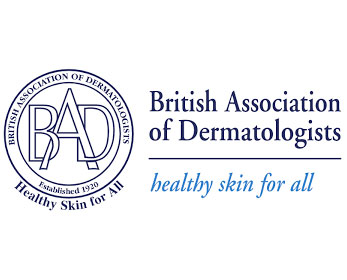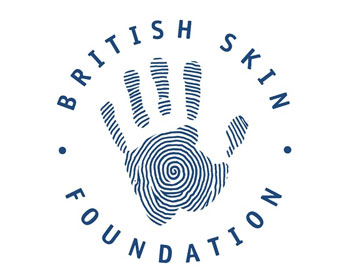What is hyperpigmentation?
Hyperpigmentation is when patches of skin become darker than the surrounding area. It is caused by a range of conditions – including melasma, freckles and moles – as well as damage to the skin caused by injury or infection.
Hyperpigmentation can be localised (affecting a specific area) or generalised (affecting large parts of the body). It happens when an excess of melanin, the brown skin pigment, gathers in the skin.
It can affect anyone, regardless of skin colour. However, hyperpigmentation can be more of a problem for people of colour because the pigment cells of those with black or brown skin produce more melanin than people with white skin.
If you have hyperpigmentation, you may feel self-conscious about your appearance – but there is support available to help you manage these feelings. On this page, we explore some of the specific causes of hyperpigmentation and look at the ways we can help you manage the impacts it may have on your life.
Note: Hyperpigmentation should not be confused with hypopigmentation, which is when patches of skin become lighter than the surrounding area. View our page on hypopigmentation.
Types and causes of hyperpigmentation
Hyperpigmentation is caused by a range of factors, including conditions, the after-effects of conditions and skin damage. There are two main types of hyperpigmentation:
- Generalised hyperpigmentation
- Localised hyperpigmentation
Generalised hyperpigmentation
A number of conditions can cause generalised hyperpigmentation – meaning hyperpigmentation which affects large parts of the body. This includes:
- Addison’s disease: A hormonal condition which in many cases causes general darkening of the skin, which may take the appearance of a tan. The skin feels like the surrounding area when touched.
- Haemochromatosis: A genetic condition which causes the body to absorb too much iron from food. In many cases it can cause widespread hyperpigmentation, particularly affecting parts of the body exposed to the sun. The affected area feels like the surrounding skin when touched.
In cases of generalised hyperpigmentation, skin darkening may be more pronounced in particular parts of the body and/or at particular times, for example, after exposure to the sun.
Localised hyperpigmentation
Localised hyperpigmentation means darkening of the skin in specific places. It can be caused by a number of things:
- Birthmarks: Some birthmarks are caused by hyperpigmentation, including café au lait spots, some moles (see below), nevus of ota and slate grey nevi (sometimes referred to as “Mongolian spots”). Have a look at our dedicated page.
- Freckles: Freckles are genetic and are often brought out by exposure to the sun. They are usually harmless but you should see your GP if you notice any unusual changes.
- Inflammation and infection: Injury, inflammatory conditions such as eczema, and skin infections such as pityriases versicolor or erythrasma can cause hyperpigmentation.
- Lentigines: More commonly known as liver spots, lentigines are small pale to dark brown spots, caused by excessive exposure to the sun, which generally occur in people aged 50 or over. When touched, they usually feel like the surrounding skin. They tend to occur in areas exposed to the sun.
- Melasma: Also known as chloasma, melasma causes flat pale to dark brown or greyish patches, often on the face and head. The root cause is not known. You can read more about melasma on our dedicated page.
- Moles: Moles (melanocytic naevi) are small spots or patches which appear darker than the surrounding skin. They may be raised or flat and may feel rough or smooth. They are usually harmless, but you should see your doctor if they grow or change shape. You can read more about them on our dedicated page.
- Skin cancers: Cancers including melanoma have the appearance of dark spots or moles of different kinds. Have a look at the NHS pages on skin cancer (non-melanoma) and melanoma for more information on how skin cancers look and feel.
Is hyperpigmentation genetic?
This depends on the cause of the hyperpigmentation. Some causes of hyperpigmentation are genetic, such as freckles. Other causes – such as injury, infection or moles – are not.
How is hyperpigmentation diagnosed?
The term “hyperpigmentation” describes skin which is darker than it would naturally be. It is easily diagnosed by looking at the skin. Your doctor will seek to diagnose the cause of the hyperpigmentation and any treatment will attempt to address this underlying cause. They may take a small sample of tissue called a biopsy and send it off for testing.
What hyperpigmentation treatment is available?
Different conditions require their own course of treatment. Once you’ve received a diagnosis for the cause of your hyperpigmentation, your doctor will be able to discuss any appropriate hyperpigmentation treatment options.
Some conditions can leave you more vulnerable to UV light which may mean that you need to use extra sun protection to avoid damage to your skin.
Hyperpigmentation and my appearance
You may find that living with a condition which affects your appearance has an impact on your mental health. Some people find that living with a visible difference or disfigurement affects their self-esteem and confidence. You may become conscious of other people staring at you or even asking questions or making comments.
What hyperpigmentation support can we offer?
If you’re struggling with the impacts of hyperpigmentation, help is available.
At Changing Faces, we offer counselling and wellbeing support with our practitioners. Our trained wellbeing practitioners provide social, emotional and psychological support over a number of confidential, one-to-one sessions. If you would like to find out more, you can speak to our Support and Information Line.
You may also find our self-help resources useful. Our guides cover different aspects of living life with a visible difference or disfigurement, from mental health and confidence to others’ reactions and working life. You can view all of our resources here.
You do not need to change your appearance to fit in with others’ expectations. However, we offer a Skin Camouflage Service as an option for people who would like to reduce the appearance of their visible difference. In skin camouflage, specialist creams and powders are used to match the affected area to the surrounding skin. Our service may help you reduce the visible signs of hyperpigmentation.
We offer a number of other support services which you may find useful:
- Online Community: In this online forum moderated by Changing Faces staff, you can discuss the impacts of hyperpigmentation on your life with other people with visible differences or disfigurements.
- Peer Group Chat Service: Our online support group takes place on Zoom or via a chatroom. You will join up to seven other participants for a facilitated discussion led by a Changing Faces staff-member.
- Workshops for children and young people and their parents: Meet others and find out about techniques, tips and tools for coping with the challenges living with a visible difference or disfigurement may bring.
- Real stories: Discover stories by other people living with hyperpigmentation and other skin conditions.
If you are interested in taking advantage of any of these services, please contact our Support and Information Line. As well as providing a gateway to our support services, our team also offers support calls which provide a space for you to talk about the impact of hyperpigmentation on your life.



